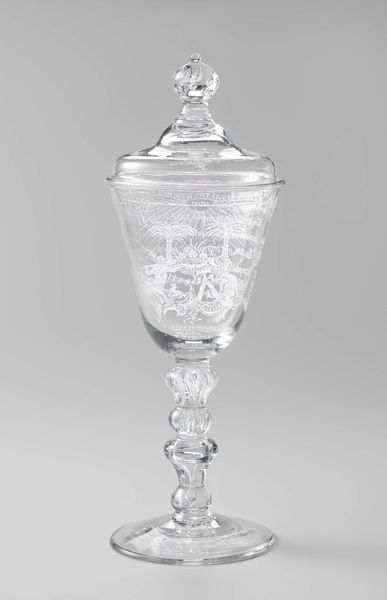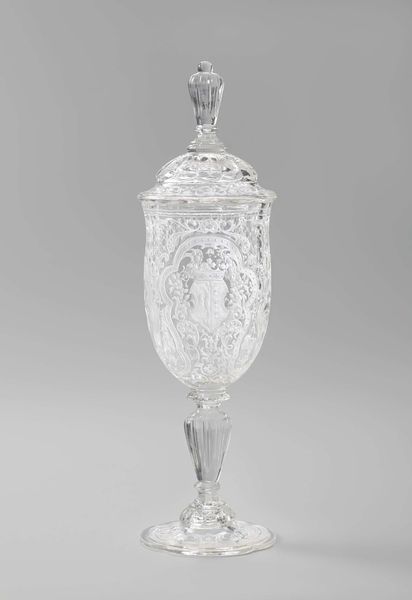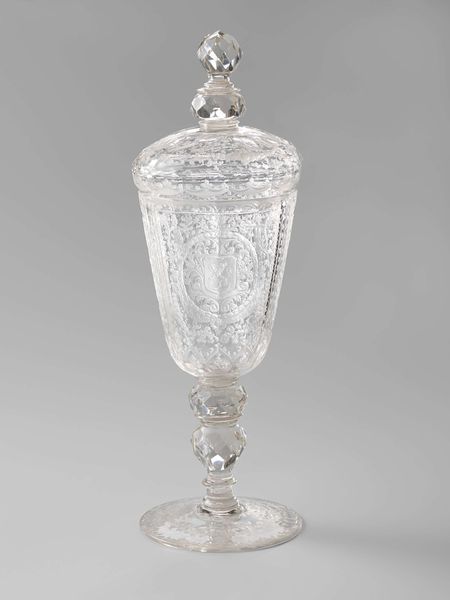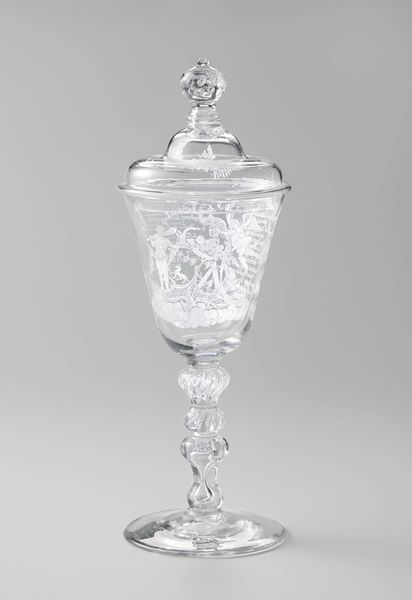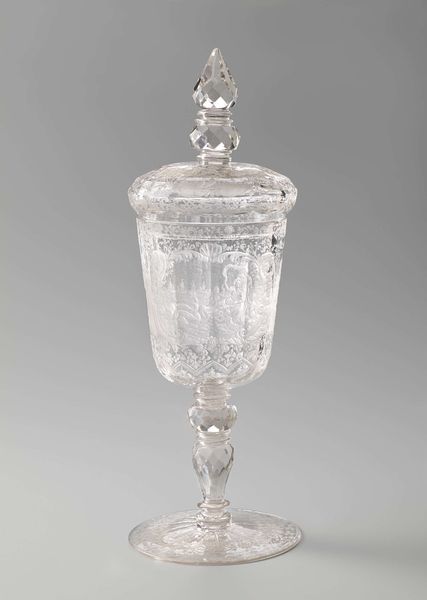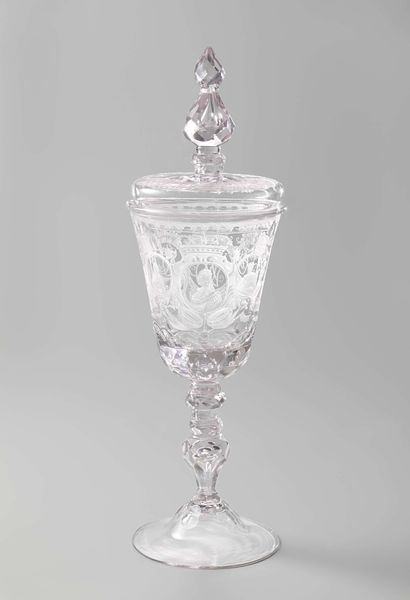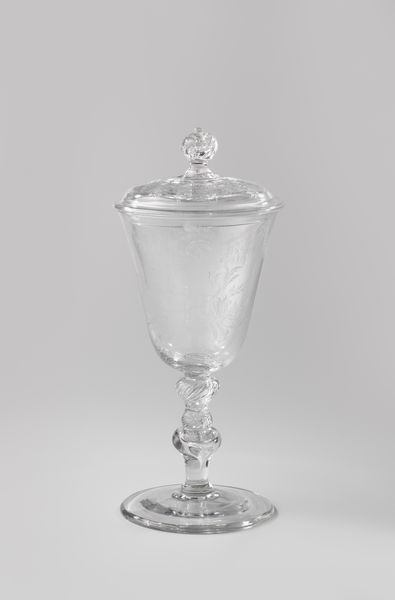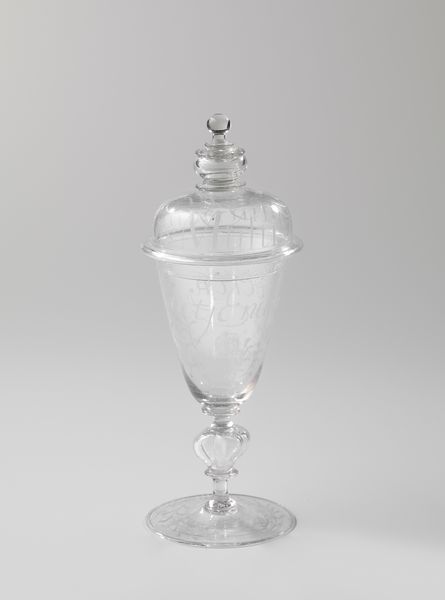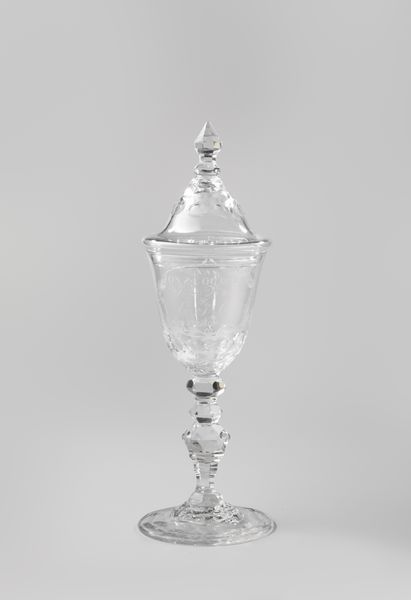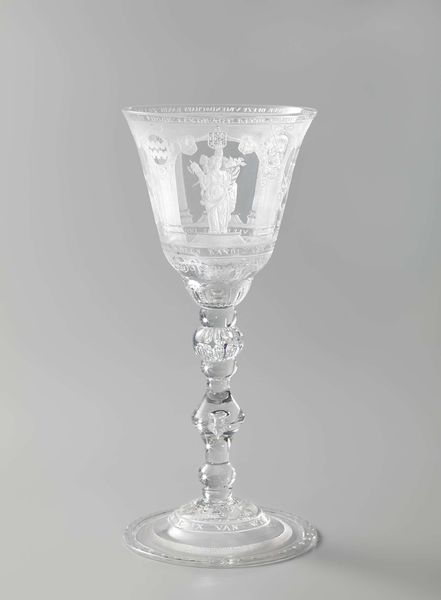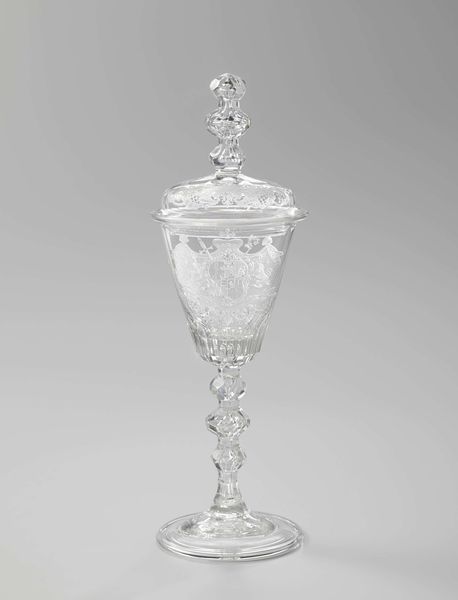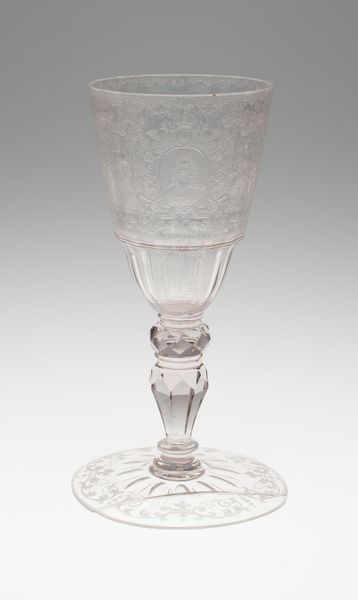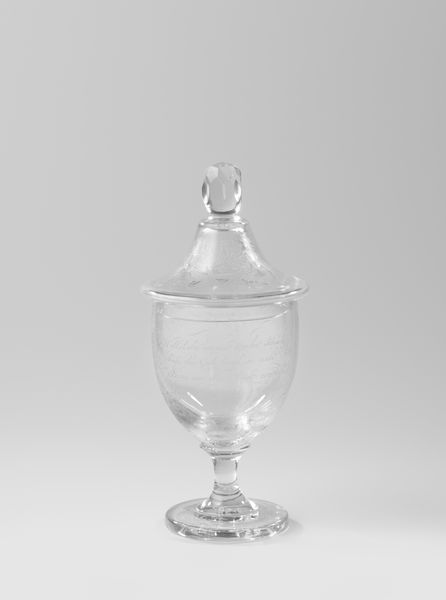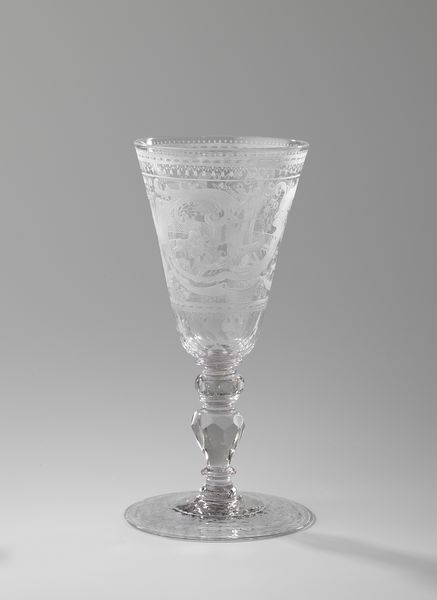
Lidded goblet with the alliance arms of William IV and Anne of Hanover 1747
0:00
0:00
ceramic, glass
#
baroque
#
ceramic
#
glass
#
ceramic
Dimensions: height 31.5 cm, diameter 12 cm
Copyright: Rijks Museum: Open Domain
Curator: What an intricate piece! I'm struck immediately by the overall clarity; it almost vanishes before your eyes. Editor: Indeed. We’re looking at a lidded goblet from 1747. It bears the alliance arms of William IV and Anne of Hanover. Curator: Goblets, historically, aren't just for drinking. They're symbols of power, prestige, often ritual. What narratives of royal alliance do you suppose it intends to communicate? Editor: Given its likely origin as a commemorative piece, I'd argue it's as much about the production of legitimacy as about lineage. How was it made, and by whom? That painstaking etching required incredible skill; whose labor went into constructing and decorating it? Curator: Agreed. And it reflects that period so strongly: the Baroque flourish, the emphasis on detail conveying power. This goblet’s visual vocabulary tells a specific story about leadership. The clear glass almost serves to project a sort of pure, unblemished image of the royal couple, literally transparent in their rule. Editor: Yet glass itself isn't inherently pure. It requires raw materials, a high degree of heat, and very specific methods to shape. Was this locally sourced glass, or was it imported? What does its presence tell us about the trade networks of the time and the social standing of the commissioner? Curator: Good questions. And the etched heraldry too, isn’t merely decorative—it functions as a kind of coded announcement about dynastic connections and authority for those who knew how to read it. In that way, a goblet is more like a carefully crafted announcement of a claim than a neutral drinking vessel. Editor: I see this object less as a transparent symbol and more as a highly produced piece intended for conspicuous display. Understanding how that material came to take this specific shape reveals the priorities of the court at the time. It represents a considered statement in the language of consumption. Curator: Well, thinking of its craftsmanship and purpose—whether displaying dynastic strength or celebrating the artisan who fashioned the glass—we can see the way in which objects become meaningful carriers of social narratives. Editor: Absolutely, from the ground materials to the moment of its commission, this goblet allows us to pour over the evidence of labor and social value made clear through glass.
Comments
rijksmuseum about 2 years ago
⋮
On the front of this goblet are the alliance arms – the combined arms – of Stadholder William IV and his wife, Anne of Hanover. On the back are the arms of the Seven United Provinces of the Netherlands affixed to a rock with the allegorical figure of Liberty. The provinces are united, steadfast as a rock in the sea. Translation of inscription: Shame on him who thinks evil of it / I shall keep / steady as a rock in the sea, so shall our union stand.
Join the conversation
Join millions of artists and users on Artera today and experience the ultimate creative platform.
